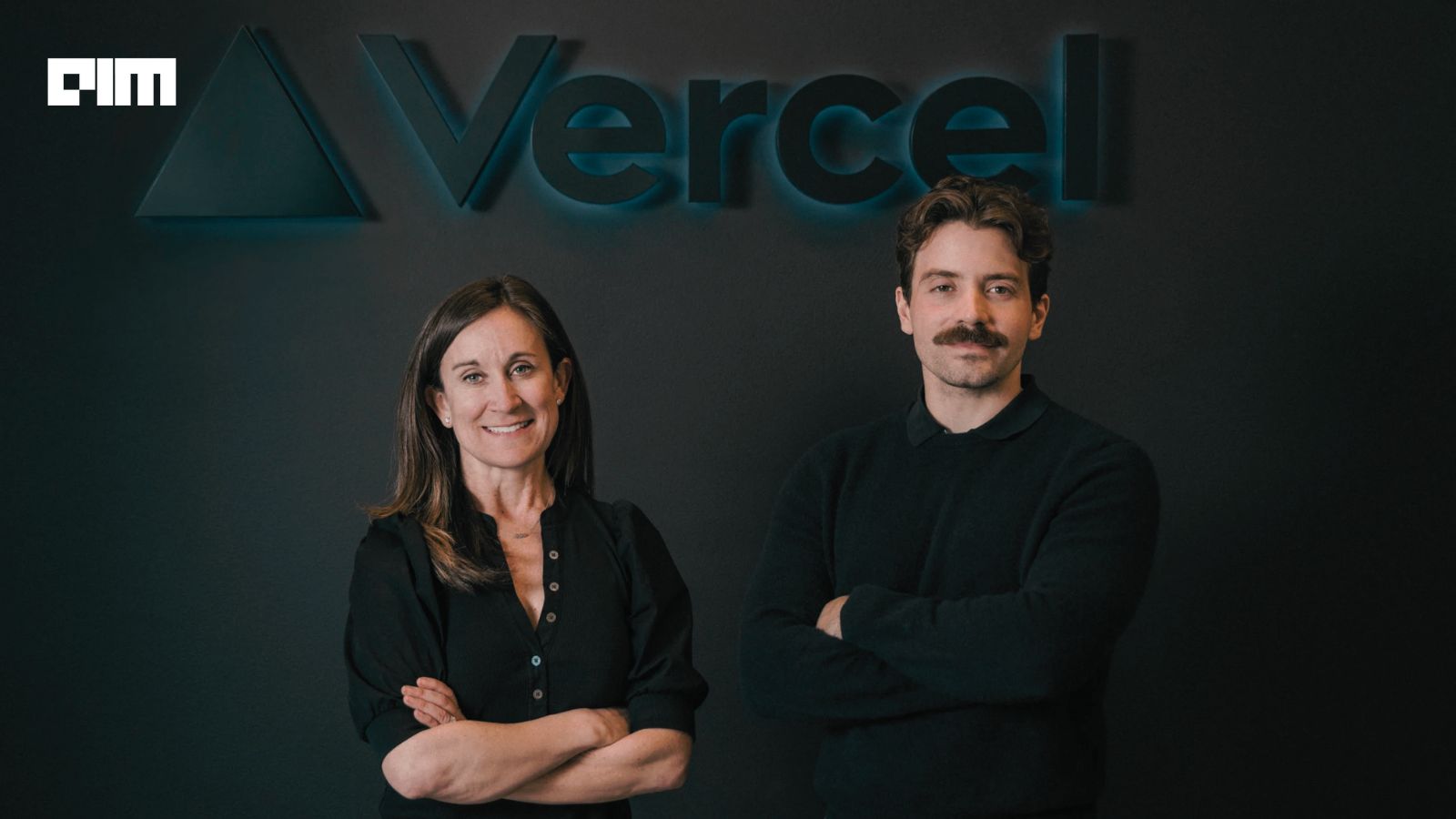Guillermo Rauch founded Vercel in 2015, with the idea to give developers a faster way to build and deploy websites and applications in the cloud. A decade later, the company is valued at $9.3 billion and powers much of the modern web. But the latest experiment is less about infrastructure and more about the future of work itself.
Over the past year, Vercel has been developing a fleet of AI agents that can absorb, replicate, and improve the workflows of its best employees. What began as an experiment in the sales department has grown into a company-wide effort that is changing how routine tasks are handled, how employees are deployed, and how the company thinks about scaling operations.
The Sales Experiment
Over the past year, Vercel has been developing a fleet of AI agents that can absorb, replicate, and improve the workflows of its best employees. What began as an experiment in the sales department has grown into a company-wide effort that is changing how routine tasks are handled, how employees are deployed, and how the company thinks about scaling operations.
Vercel’s inbound sales team once consisted of 10 sales development representatives (SDRs), each tasked with reviewing incoming queries, filtering out spam, researching potential customers, and drafting replies. The work was repetitive and time-consuming, but essential to keeping the pipeline full.
Jeanne DeWitt Grosser joined Vercel as chief operating officer in March, she saw an opportunity to test whether AI could take on this kind of structured workflow. She asked three engineers to embed themselves with the SDR team. For six weeks, they shadowed the team’s top performer, observing and documenting each step of the process: how to qualify a lead, what data sources to check, how to craft a reply, and when to escalate a request to support.
That documentation became the blueprint for Vercel’s first “lead agent.” The system now reviews inbound messages, weeds out spam, cross-checks company details through LinkedIn and Google, queries internal databases, and drafts personalized responses. Support inquiries are automatically routed to the correct team. All drafts are posted in Slack, where a manager reviews the output, corrects tone, and provides feedback. Over time, the agent learns and improves.
The impact was immediate. Instead of 10 SDRs splitting inbound queries, Vercel now uses one person to supervise the agent, while the other nine have been reassigned to outbound prospecting. “If you can document a workflow, it’s now pretty straightforward to have an agent do it,” Grosser said.
Rauch frames Vercel’s history in chapters. “Chapter one of Vercel was providing the developer experience to build pages,” he said. “The world is going from pages to agents.”
The company’s bet is that the next stage of the internet will be built on AI services rather than static web services. At its Ship AI conference, Vercel laid out a formal definition of agents: long-running workflows that resemble graphs of business processes rather than the short CPU bursts once common in rendering. These workloads run for minutes, hours, or even days.
To serve that demand, Vercel has released its AI SDK, which Rauch calls the “React of AI.” The open-source package is quickly becoming one of the most widely adopted toolkits for developers building agents. Many are net-new customers, while some enterprises are skipping traditional digital transformation projects and going straight to agents.
Infrastructure and the Cloud Debate
Instead of quick workloads, agents “think” and consume tokens continuously. They also need to run close to enterprise data for retrieval-augmented generation.
Some newer companies have experimented with building neo-clouds and standing up their own data centers. Rauch acknowledged the trend but said Vercel will continue to rely on hyperscalers. “Developers come to us because of the developer experience,” he said. “We can automatically make the best infrastructure decisions on their behalf.” Proximity to enterprise data, security requirements, and latency, he argued, still favor hyperscalers.
Vercel has introduced services such as the AI Gateway to manage model selection, routing, and token efficiency. At Next.js Conf, the company unveiled Next.js Evals, a benchmarking tool Rauch described as an “oracle of truth” for measuring how well models handle production-grade coding workloads.
The approach resonated with David Totten, a former Databricks and Microsoft executive who joined Vercel this month as vice president of global field engineering. “Modeling after the top-performing employees has always been a standard business practice,” he said. “The difference now is that technology lets us accelerate it.”
Building a Portfolio of Agents
Vercel has deployed six AI agents so far and plans to scale into the hundreds over the next year. The guiding principle is to identify workflows that are “replicable and deterministic.”
The lead-processing agent became the template. Before its launch, processing a single lead could take up to 50 minutes of manual effort, from Googling the company to copying details into a spreadsheet. The agent compressed that workflow into minutes, saving hundreds of person-days of work and allowing sales staff to focus on higher-value interactions. Vercel even open-sourced the framework so other companies could adapt it.
On the engineering side, Vercel introduced a code review agent that reviews pull requests, determines fixes, and validates them in sandbox environments before suggesting changes. Developers report that the fixes are cleaner and more likely to be accepted because they have already been tested against the codebase.
Trust and safety is supported by an abuse agent that reviews reports of phishing, impersonation, and other malicious activity. It gathers data on domains, assets, and payment details, applies known abuse patterns, and recommends actions with a confidence score. A human still makes the final call on whether to block, but the system has cut case times by more than half.
The company has also worked to democratize access to data. A business intelligence agent embedded in Slack allows employees to type questions in natural language and receive answers pulled directly from internal databases. The system translates questions into SQL, executes them, and summarizes the results in the same thread, eliminating the bottleneck of waiting on a central data team. This framework has also been open-sourced.
Other internal deployments include a support agent that has reduced ticket volume, a deal review agent that analyzes why opportunities were won or lost, and a creative coding agent that drafts blog posts and changelogs using Slack context.s headcount has grown over the past year, even as automation has increased.
Agents, Not Downsizing
Rauch sees protocols as a critical bridge between consumer AI apps and enterprise deployments. Today, a user prototyping a landing page in ChatGPT or Gemini must switch platforms to deploy it. With MCP (Model Context Protocol), developers can embed their apps directly inside ChatGPT. Vercel has already demonstrated this with integrations that allow customers to deploy projects through ChatGPT itself. Rauch likens the shift to the internet’s move to HTTP, calling MCP a foundation for agent-to-agent communication across platforms.
Vercel also announced a marketplace for one-click installation of AI agents and services. Developers can access third-party tools such as browsers on demand or security auditing services without leaving Vercel’s environment. Because Vercel manages deployment URLs, production data, and code, it is positioned to act as a hub for specialized agents. Rauch said Vercel will create some agents, acquire others, and rely on outside developers for the rest.
A recent outage in AWS’s US-East-1 region offered a glimpse of Vercel’s longer-term vision. Instead of human engineers being paged in the middle of the night, Rauch envisions agents handling the first pass—triaging anomalies, investigating causes, and escalating only when necessary. Grosser has been explicit that the program is not about reducing headcount. “My personal view is humans are capable of a lot more than most jobs allow them to do,” she said. Employees whose previous roles were highly repetitive have been reassigned to tasks that require more strategic thinking. The company’s headcount has grown over the past year, even as automation has increased.










